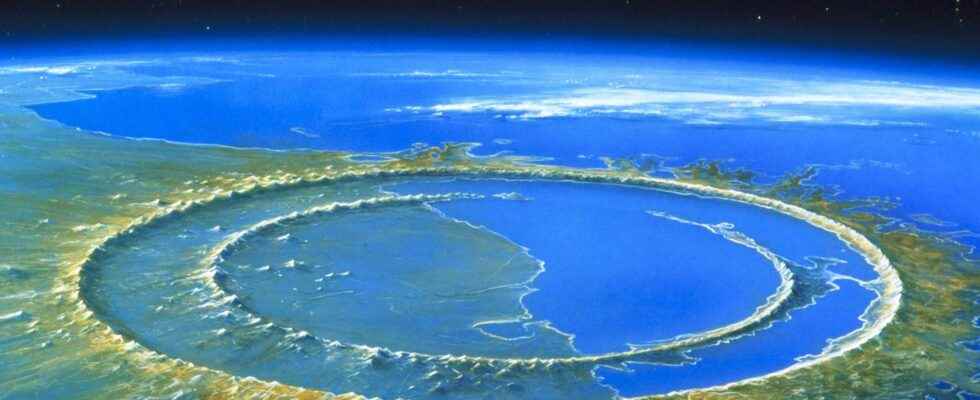About 66 million years ago, the impact of an asteroid, with the possible combined effects of strong volcanic episodes, would have led to the extinction of the majority of living species, in particular via significant climatic variations. A team of geologists points to the probably underestimated effect of sulfur elements in the Earth’s atmosphere on its climate; they also posit that these variations in the sulfur cycle would have been caused by the impact, reducing the possible role of volcanism in the mass extinction process.
You will also be interested
[EN VIDÉO] The Chicxulub crater, witness to the extinction of the dinosaurs About 65 million years ago, near the Yucatán Peninsula, Mexico, a meteorite more than 10 km in diameter crashed to Earth forming the Chicxulub crater. The shock, equivalent to about a million atomic bombs, would be partly responsible for the extinction of the dinosaurs. Discovery Science looks back on this event on video.
About 66 million years ago, at the end of the Cretaceousa cataclysm occurred causing the disappearance of most of the species terrestrial (including dinosaurs), and nearly three-quarters of marine species: this is the Cretaceous-Paleogene extinction (denoted K-Pg), the causes of which are not yet fully understood. Scientific theories generally agree that this extinction would have been the result of the combined effects of a meteorite impact and major volcanic episodes: the dating of the crater of Chicxulub (located in Mexico), and that of rocks formed by massive volcanic activity in the Deccan Traps (India), could coincide with the extinction event. These events would have caused abrupt climatic variations on the terrestrial scale, so rapid that the living species would not have been able to adapt to them.
Although these impact events and massive volcanic activities have been well identified, their influence and their real effect on the climate are still poorly constrained. In a new study, published in Pnasa team of scientists establishes the preponderant role of the destabilization of the cycle of sulfur during this period on the strong climatic variations.
The K-Pg boundary, a precious geological archive
Although impacts with other celestial bodies are an integral part of our planet’s history, the resulting geological records can be sparse in information. This is what makes Chicxulub’s impact unique: he left behind a thin deposit of sedimentcalled K-Pg limitfrequently represented by a thin layer ofclay enriched with iridiumand are found worldwide in both terrestrial and marine environments, marking the global scale of impact consequences.
The team of geologists thus identified several samples along the Brazos River in Texas, in the rock layers that would have recorded the immediate consequences of the impact of Chicxulub. Using new analytical methods, the team was able to detect geochemical signatures in these samples — mass-independent sulfur isotope fractionation, characterized by a difference in behavior between various isotopes of the same chemical species –, but also in later samples at the K-Pg limit: according to the scientists, this would be proof that large quantities of sulfur were injected into the upper layers of theatmosphere.
Destabilization of the sulfur cycle and the climate
According to scientists, these geochemical signatures require massive amounts ofaerosols sulfates in the stratosphere (where they would have a longer residence time than in the underlying layers), which would then be gradually redeposited in the form of rains acids. According to them, these aerosols could have several origins: they could be the result of photolysis of sulfur dioxide in the atmosphere, itself coming from the ejection of the impacted rock (rich in gypsum, hydrated sulfate mineral); another origin could be combustion biomass as a result of the impact, emitting significant amounts of oxysulfide from carbon (COS). In both cases, these gas are intended to be oxidized in the atmosphere into sulphate aerosols.
The study thus underlines the preponderant role of sulfur in the climatic variations of the end of the Cretaceous, and especially its impact on long time scales after the impact. It also helps to better constrain the role of volcanism in the Deccan traps in this extinction: according to the researchers, the geological markers of this volcanic activity take place a few hundred thousand years before and after the extinction phenomenon. In doing so, the scientists argue that the Chicxulub impact would have been the triggering event for the Cretaceous-Paleogene extinction, with the possible contribution of volcanic episodes.
Interested in what you just read?
